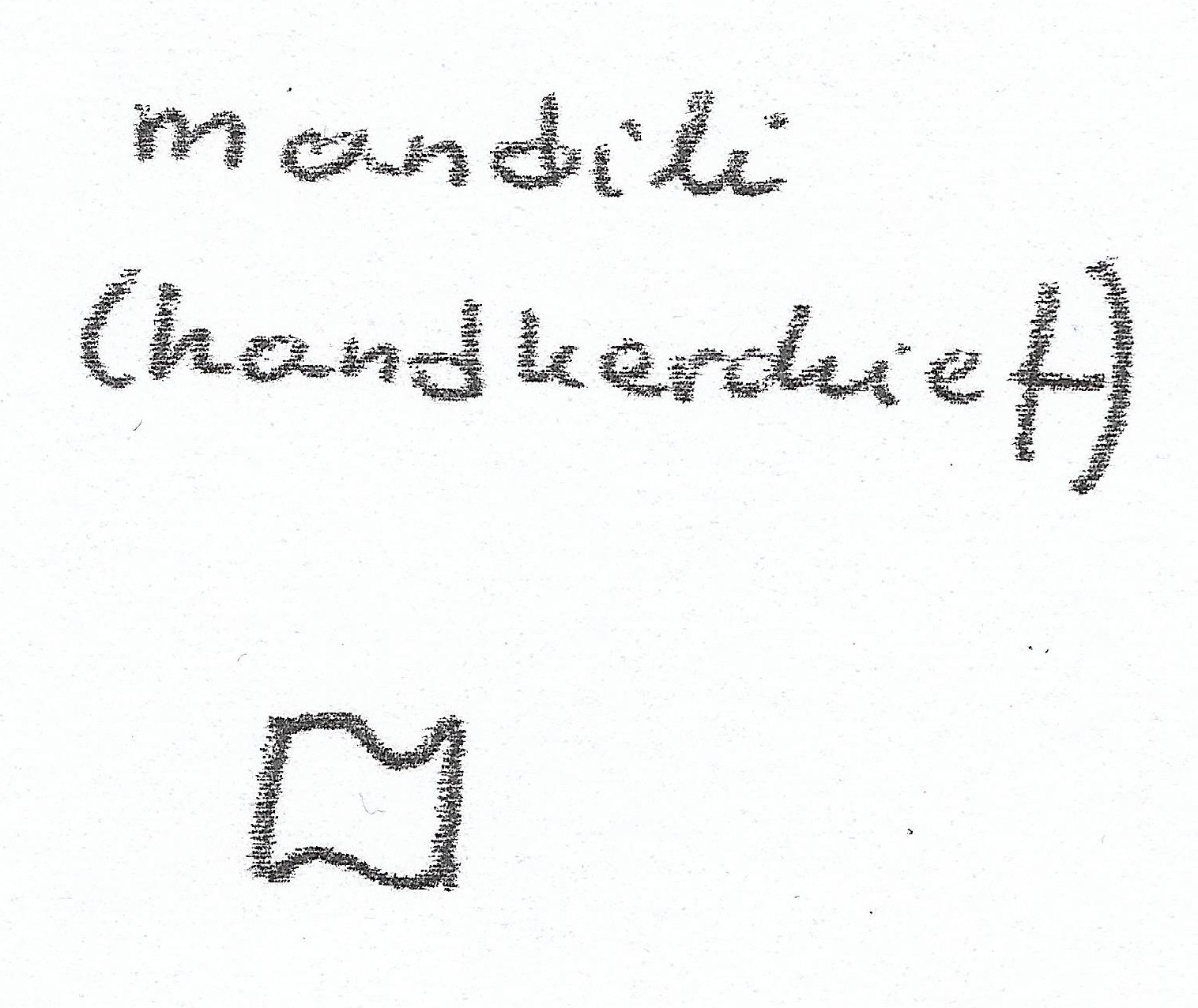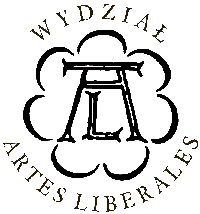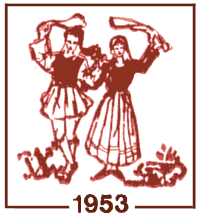| Testimony of: | kerchief |
| Source | Αβέρωφ 1989, 46 (in EEH, sv. Καρτσιλαμάς γυναικείος, p. 268) |
| Original text | Οι γυναικείοι αντικρυστοί χοροί χορεύονται από δυο γυναίκες που στέκουν η μια απέναντι της άλλης και κινούν τα χέρια κατά τρόπο που υποδηλοί κέντημα ή ράψιμο, τόσο στον Πρώτο όσο και στο Δεύτερο. Στον Τρίτο, παίρνει η κάθε μια ένα μαντήλι από τα δυο άκρα διπλωμένο διαγωνίως και το κινεί ρυθμικά και χαριτωμένα την ώρα που χορεύει, τούτο υποτίθεται ότι είναι αυτό που κέντησε ή έραψε κατά τους δύο προηγούμενους χορούς. Ο χορός αυτός λέγεται ακόμη και Χορός του Μαντηλιού. Ακόμη, ο Τρίτος Γυναικείος Αντικρυστός είναι ο χορός του ανδρογύνου, τον οποίο οι νεόνυμφοι εχόρευαν προς τιμήν των προσκεκλημένων των το τελευταίο βράδυ του γάμου. Κατά την ώρα που το ανδρόγυνο χόρευε οι μουσικοί τούς τραγουδούσαν τραγούδια ευχετήρια, επαινετικά και παραινετικά, ενώ οι συνδαιτημόνες "πλούμιζαν" το ανδρόγυνο, φιλοδωρούντες με χρήματα μέσα σε ένα πιάτο ειδικά τοποθετημένο ή καρφιτσώνοντας τα χαρτονομίσματα πάνω στο φόρεμα της νύφης ή στο κουστούμι του γαμπρού. Οι γυναικείοι αντικρυστοί χοροί, χαρακτηρίζονται για την σεμνότητα και τις συγκρατημένες κινήσεις των. Ενα από τα χαρακτηριστικά ακούσματα κατά την έναρξη του Πρώτου είναι οι παράλληλες πέμπτες με το λα και μι του καλοκουρδισμένου βιολιού, αμέσως μετά την ανάκρουση της σχετικής κλίμακας, που οι παλιοί βιολάρηδες ονομάζαν "βαριατσιόνα". |
| English translation | Female opposite dances are danced by two women who stand in front of each other and they move their hands in a way that suggests embroidering or sewing during the First and the Second phase. During the Third, each of them grabs a kerchief by its two corners, folded diagonally, and moves it rhythmically and gracefully while dancing. This suggests that it is the same kerchief that was embroidered and sewed in the two preceding dances. This dance is also called the Dance of the Kerchief [Choros tou Mantiliou]. Also, the Third Female Antikrystos [opposite dance] is a dance of the married couple, which was danced by them to honour the guests on the last night of the wedding. At the time when the couple was dancing, the musicians were singing songs of greeting, praise and advice, while the diners were “adorning” the couple, bestowing them with money on a plate placed specifically for this purpose, or by pinning the banknotes on the dress of the bride and the suit of the groom. The female opposite dances were characterized by modesty and moderate moves. One of the typical sounds to be heard during the First part were the parallel fifths with “la” and “mi” of the well-tuned violin, immediately after the recoil of a specific scale – which is what the old fiddlers called: “variatsiona”. |
| Time/occasion of occurence | wedding |
| Region of occurence | Cyprus - Show on map |
| Function | decorative, |
| Dance name | Third Gynekeios Antikristos |
| Comment | first two dances imitated sawing and embroidering |
| Symbol in Kinetography score |
|


